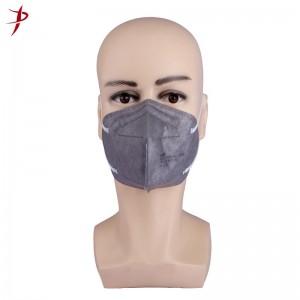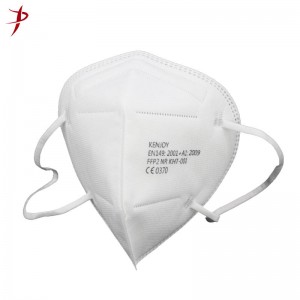ffp2 mask vs pm2.5| KENJOY
Whether we face a global pandemic or catastrophic wildfires that cause record smog and air pollution, little is known about the difference between ffp2 masks and particulate filter pm2.5 masks. Both FFP2 masks and particulate masks with pm2.5 filters provide excellent protection against small particles in the air. Both ffp2 and PM2.5 masks are ideal for fighting larger particles with less discomfort. When should one of these be used, especially when a health care provider needs a medical respirator?
FFP2 mask
Ffp2 masks are useful in hospitals, doctors' offices and other environments where airborne pathogens are common. Ffp2 masks are ideal for preventing body fluids containing bacteria and viruses from leaving your body, but not necessarily entering your body. In general, ffp2 masks are designed to protect people around you by minimizing airborne particles from your mouth and nose, including virions that hitchhike on your body fluids.
Because ffp2 masks are designed to block water droplets, they are generally loose and may leave a gap between the edge of the mask and your skin. Although heavier droplets are unlikely to move to the edge of the mask, these gaps do make the mask less effective in preventing the invasion of smaller, lighter particles that can slip through many of the gaps between the ffp2 mask and your face.
Particulate matter mask
Also known as PM2.5 masks, they fit better than ffp2 masks and can usually be reused. However, unlike ffp2 masks, "PM 2.5" masks are designed to protect you and others, so they tend to fit better, have fewer wrinkles, and may contain (filtered) expiratory valves. These masks are usually packaged with disposable 2.5 filters. Depending on the "grade" of these masks, they can be designed to filter 65% to 90% of fine aerosol particles, only slightly lower than N95 masks, but with lower suction pressure.
Different types of FFP2 masks use different filter materials. On the one hand, the filtration effect is related to the particle size, but also affected by whether the particles contain oil or not. FFP2 masks are usually classified according to filtration efficiency and according to whether they are suitable for filtering oily particles. Oil-free particles such as dust, water-based fog, paint fog, oil-free smoke (welding smoke), microorganisms, etc. Although the filter materials of "non-oily particles" are common, they are not suitable for oily particles, such as oil mist, oil fume, asphalt fume, coke oven smoke and so on. The filter materials suitable for oily particles can also be used for non-oily particles.
What are ffp2 masks suitable for
1. Personal protective products designed to prevent or reduce the entry of dust from the air into the respiratory organs of the human body so as to protect the safety of life.
2. Materials: anti-particulate masks are mostly made of inner and outer layers of non-woven cloth and a middle layer of filter cloth (melt blown cloth).
3. Filtering principle: filtering fine dust mainly depends on the filter cloth in the middle. Because the melt-blown cloth has its own characteristics of static electricity, it can absorb small particles actively. Because the dust is adsorbed on the original filter, and the original filter cannot be washed with static electricity, the self-priming filter anti-particulate respirator needs to be replaced regularly.
4. Remarks: the use of anti-particulate masks is very strict in the world. Anti-particulate masks belong to the first level in personal protective equipment, which is higher than earmuffs and protective glasses. The more authoritative testing certifications are CE certification in Europe and NIOSH certification in the United States, while the standard in China is similar to that of NIOSH in the United States.
5. Protective objects: the protective objects are KP and KN. The so-called KP can protect oily and non-oily particles, while KN can only protect non-oily particles.
This is the introduction of ffp2 mask vs pm2.5. If you want to know more about FFP2 masks, please feel free to contact us.
Learn more about KENJOY products
Read More News
Video
Post time: Jan-19-2022



